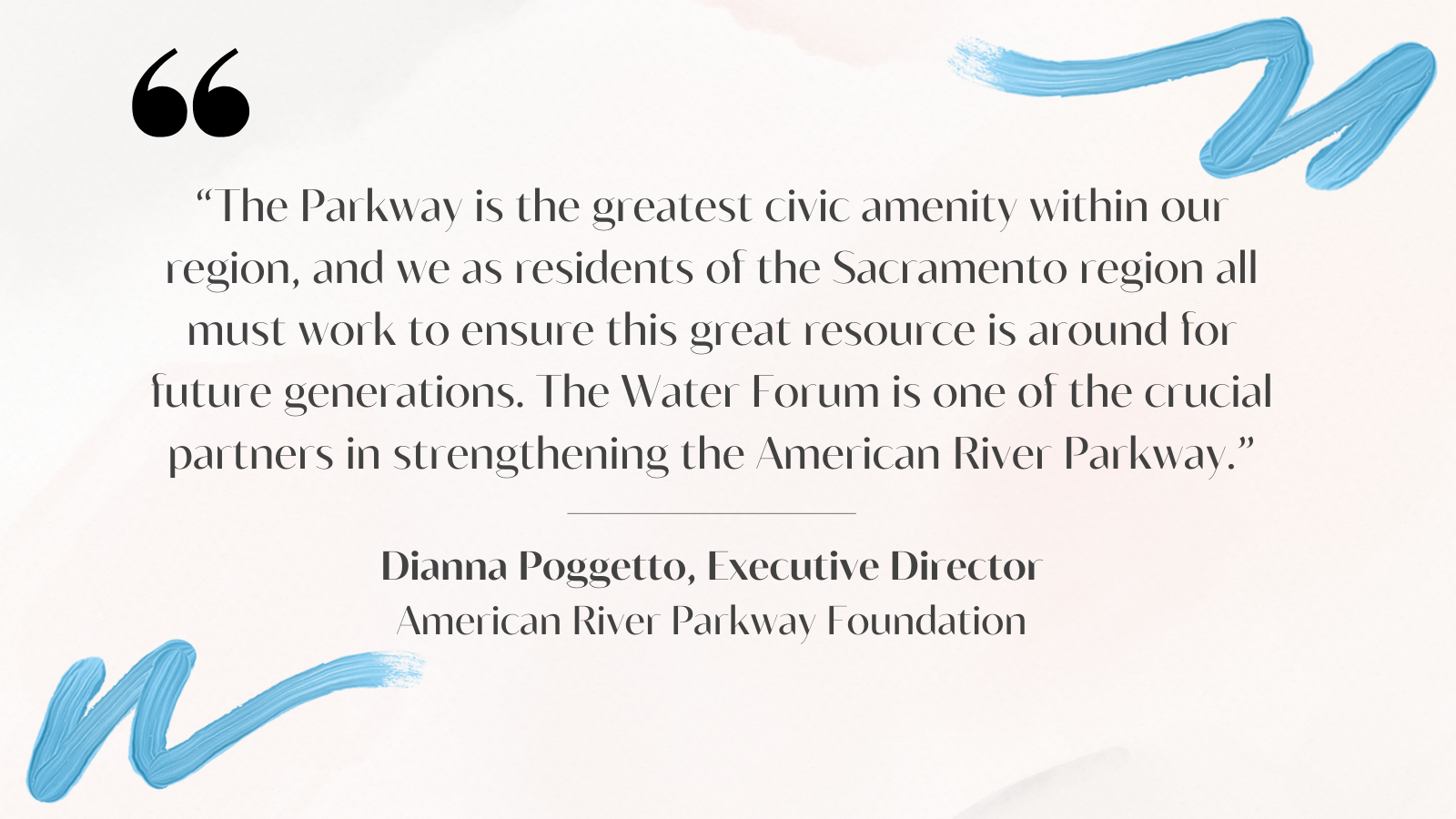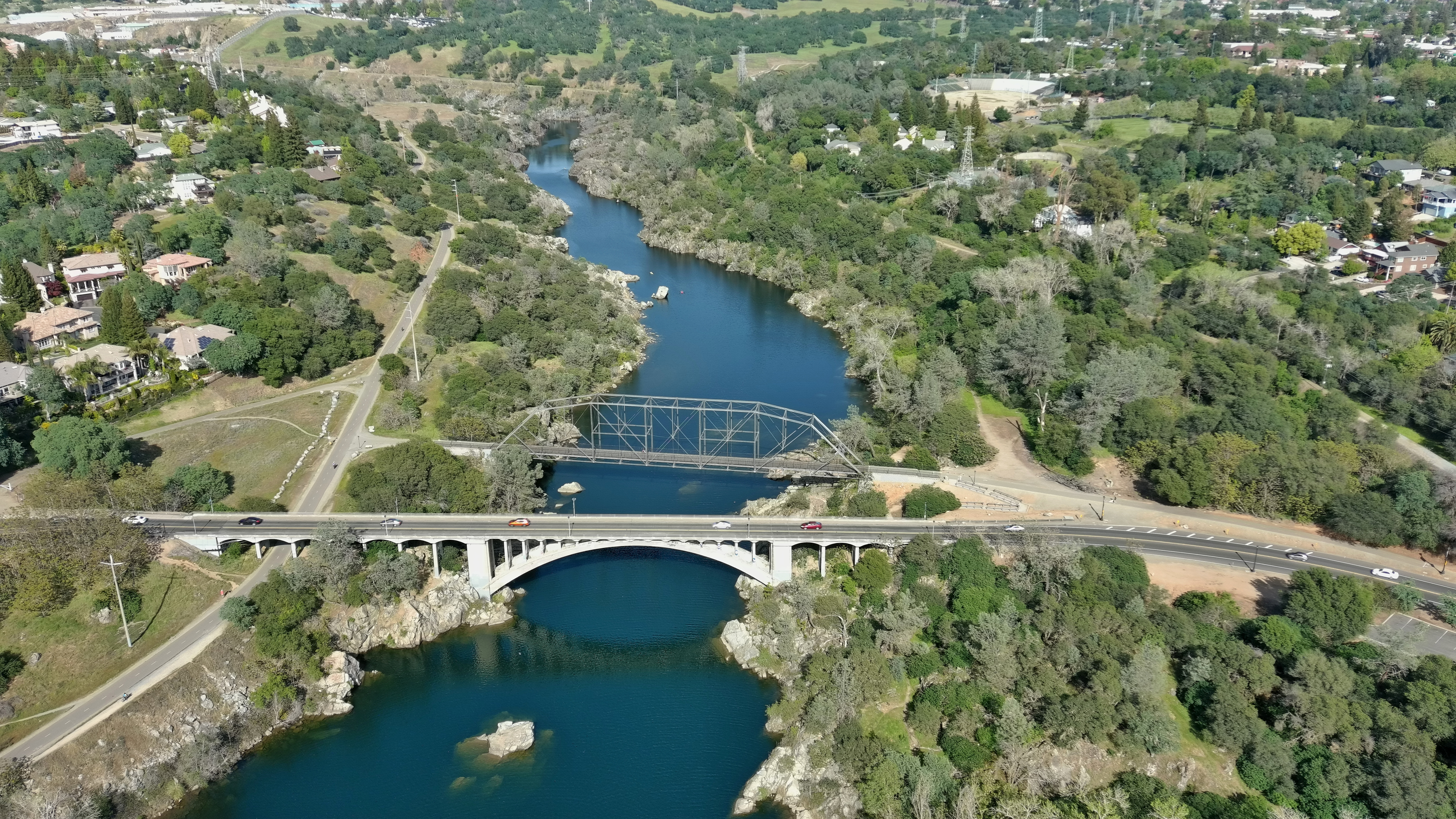Here at the Water Forum, our work centers on the Lower American River, the flowing Wild and Scenic heart of California’s capital metro area, and working to balance the coequal objectives of providing reliable water supplies and preserving the river’s environment.
But a vibrant river corridor requires so much more than that. This is why we work closely with other vital groups like the American River Parkway Foundation.
The Foundation handles a wide range of habitat protection and enhancement work of its own, mainly focused on improving natural areas along both sides of the river. It also offers a wealth of essential public education and volunteer programs, helping visitors and residents understand and appreciate this unique urban jewel.
“The Foundation does a lot of the heavy lifting on conservation in the parkway,” said Water Forum Executive Director Jessica Law. “It’s fair to say the parkway would not be what it is today without them.”
Founded in 1983, the Foundation is the only nonprofit focused on conserving the full 23 miles of the Lower American River (defined as the stretch from Folsom Dam downstream to the Sacramento River confluence). It maintains trails and other infrastructure, organizes trash cleanups, helps minimize fire risk, controls invasive species, and mobilizes armies of volunteers for all this work and more.
“This work has a lot of positive impacts on not just the environment, but the community as well,” said Daniel Whitaker, natural resources manager at the Foundation.
The Water Forum and the Foundation work closely together on their shared goals. For instance, Whitaker participates in all the Water Forum plenary and public caucus meetings. The Water Forum’s Jessica Law is a member of the Foundation’s Program Committee, which reviews and advocates for new and existing programs managed by the Foundation.
One of the Foundation’s biggest jobs is combating invasive weeds. Not many people realize it, but before the 1990s much of the parkway was a jungle of invasive species, which harmed public access to the water itself and compromised habitat for native wildlife. A group called Sacramento Weed Warriors was formed to address the problem, and it eventually became part of the Parkway Foundation.
Some of the worst offenders are shrubs including French broom, Spanish broom, and red sesbania. The latter, also known as scarlet wisteria, grows so thick that it can eliminate public access to the water’s edge.
Another well-known culprit is the yellow star thistle, which has invaded much of the western U.S. This year, the Foundation expects to begin a pilot project with the U.S. Fish and Wildlife Service to control this invader in the parkway.
Today the Foundation trains and manages a small army of volunteers to remove invasive weeds. Some have been with the program for more than a decade and bring a ton of experience to the work. It’s a job that never ends, Whitaker said: Because many of the invaders are planted in ornamental landscapes, their seeds wash into the parkway from surrounding residential areas every time it rains.
Another big project is a community wildfire protection plan. The Foundation formed a Fire Safe Council in 2021, a year in which fires burned more than 15 percent of the entire parkway. It was time to get a handle on this problem, whether the fires have a human or natural cause.
The wildfire plan includes a detailed GIS-based study of the entire parkway, mapping structures and habitats to protect (such as heritage oak groves), areas where prescribed fire is desirable, and many other criteria. The draft plan is being prepared in partnership with the Sacramento County Regional Parks Department. The Water Forum is also involved.
“It’s making the whole parkway more resilient,” Whitaker said. “We’re protecting natural habitat. But also, community access to water is all tied into the work we do as well.”


